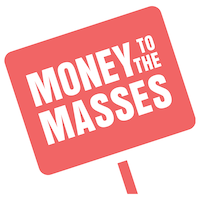 Before you apply, you should compare personal loans from different providers to make sure you are getting the best possible deal. This could mean comparing personal loans to find the one with the longest loan term, the highest available loan amount or the lowest APR. In this article, we have all the information you need to run your own personal loan comparison and find the right provider for your borrowing needs.
Before you apply, you should compare personal loans from different providers to make sure you are getting the best possible deal. This could mean comparing personal loans to find the one with the longest loan term, the highest available loan amount or the lowest APR. In this article, we have all the information you need to run your own personal loan comparison and find the right provider for your borrowing needs.
Compare loan deals
We’ve teamed up with Creditec
- Check your eligibility for a loan before you apply
- No effect to your credit score
- Representative 26.9% APR
- Simple to use

Compare personal loans - January 2025
The figures in this table are based on the representative example of a £10,000 loan repaid over five years. If you borrow more or less over a shorter or longer period, the advertised rate of interest may be different. Also, keep in mind that the final loan amount and rate you are offered will be based on your credit history and financial circumstances, so may differ from the representative APR.
| Loan provider | Representative APR (from) | Available loan term | Available loan amount | Monthly payment | Eligibility checker? |
| TSB | 5.9% | 1 - 7 years | £300 - £50,000 | £192.15 | No |
| Tesco Bank | 6.1%¹ | 1 - 10 years | £1,000 - £35,000 | £193.02 | Yes |
| Santander | 6.2% | 1 - 5 years | £1,000 - £25,000 | £193.47 | No |
| M&S Bank | 6.2% | 1 - 7 years | £1,000 - £25,000 | £193.47 | Yes |
| HSBC | 6.6% | 1 - 5 years | £1,000 - £25,000 | £195.23 | No |
| Halifax | 6.7% | 1 - 7 years | £1,000 - £50,000 | £195.67 | Yes |
| AIB (NI)² | 7.1% | 1 - 5 years | £1,000 - £25,000 | £197.85 | No |
| Zopa | 22.9% | 1 - 5 years | £1,000 - £25,000 | £269.40 | Yes |
Representative APR is based on a 5-year loan term
¹Clubcard members receive a preferential rate, non-members will get from 6.5% with monthly repayments from £194.79
²You must be an existing personal current account customer with AIB (NI) and registered for Online Services
The key figures in a personal loan comparison
| Key figure | What it means |
| Loan amount | The amount you are borrowing from the lender. Most unsecured loans are between £1,000 and £25,000, though some people may be able to borrow much more. |
| Loan term | The length of time over which you will pay the money back. You will usually have one to seven years to repay your loan, but some lenders will offer longer terms. |
| APR (annual percentage rate) | This is the annual rate of interest that shows you the cost of borrowing money. It takes into account the interest you are being charged as well as any other fees that are applicable. |
| Representative APR | This is the APR that a lender expects at least 51% of successful applicants to be offered. You may be charged more or less than this figure, but it can be a good tool to compare providers. |
| Loan fees | The extra money you are charged on top of repaying what you borrow. Fees will vary from lender to lender. |
| Early repayment charge | This is a percentage figure that some lenders will charge you if you wish to clear your debt before the end of the loan term. |
| Credit score | Your credit score is an assessment of how trustworthy a borrower you are. A low credit score may mean your loan application will be rejected, while a high score suggests you could be offered the best rates. |
How to choose a deal from your personal loan comparison
Money to the Masses uses Creditec*, an online comparison service that allows you to find loan deals tailored to you without affecting your credit score. It is important to compare as many different options as possible before you apply for a loan, so it is a good idea to do a fast online comparison. With only a few basic details, the Creditec tool will build a personalised list of loans suited to your needs, if you are eligible. You can then pick the result that suits you best, without the need to navigate through every single loan on the market. None of this will affect your credit score as the eligibility process uses a soft credit check. Click on this link to get started*. If you are not eligible for a loan with any of the providers on the panel then you may be shown a variety of alternative products that may be suitable for you. You are under no obligation to continue with them if you feel they are not suitable for your circumstances.
How to compare personal loan amounts
You can see from our personal loan comparison table that most providers will lend between £1,000 and £25,000. However, some lenders will offer more than £25,000 or less than £1,000. Exactly how much you can borrow will be based on your credit history, financial circumstances and the repayment period you choose, though lenders should only agree to an amount you can afford to repay.
Applicants with a credit score and income level that suggests they can afford high monthly repayments will be able to borrow at the upper end of a lender’s limit, especially if they want a long repayment period that will spread out the debt and lower the monthly payments. However, anyone with a poor credit history and a low or irregular income may find it tough to convince a lender that they can repay a high amount of debt.
This is not always a negative, as responsible lending also protects the borrower. Even if it is possible to borrow a bit extra, it is a good idea to stick to what you need. Any additional money may only slightly increase your monthly payments, but it could make a significant difference to how much you pay overall.
What can I use a personal loan for?
You are free to use a personal loan for almost any purpose, with a few important exceptions.
| Can use a personal loan | Cannot use a personal loan |
| Home improvements | Starting a business |
| Home repairs | A house deposit |
| Energy efficiency improvements | Investments |
| Debt consolidation | Household bills |
| A car | Everyday spending |
| A big purchase | Higher education |
| A wedding | A gift |
| A holiday | Gambling |
We cover this question in more detail in our article 'What can you use a personal loan for?'.
Pros and cons of a personal loan
Make sure you know the basics of borrowing before you compare personal loans. Here are the main advantages and disadvantages that you should consider.
Pros of personal loans
- Spread out the cost of a big purchase
- Borrow without risking a major asset (which you would need to with a secured loan)
- Know your fixed monthly repayment amount will not change
- Borrow at a lower long-term interest rate compared with most credit cards
- Personal loans are widely available
- Your debt can be repaid early, in most cases, although some may charge a fee
- Applications are often approved quickly and the money paid out soon after
Cons of personal loans
- Can be difficult to borrow smaller sums at a reasonable rate
- The maximum loan amount is often low compared to a secured loan
- You may pay a higher interest rate compared to a secured loan
- Any missed repayments or failed applications will likely damage your credit score
- It can be tough to get an affordable interest rate with bad credit
Alternatives to a personal loan
Your personal loan comparison could leave you thinking that a personal loan is not the right option for you after all. Don't fret, as there are many different ways to borrow money. Here are some alternative options to consider:
Secured loan
With a secured loan, you will need to use your home, car or other valuable assets as security, but you may be able to access much higher loan amounts and lower interest rates. Read our article ‘What is a secured loan?’ to learn more.
Credit card
A credit card is more flexible than taking out a loan. You only pay back what you spend and you can take advantage of limited-time 0% interest options, rewards cards and credit cards that can help you build credit.
Remortgaging
Remortgaging is a common way to raise money for home improvements by increasing what you owe on your current mortgage.
Car finance
If you planned to take out a loan to pay for a new car, you may find that specialist car finance is an easier option.
If a link has an * beside it this means that it is an affiliated link. If you go via the link Money to the Masses may receive a small fee which helps keep Money to the Masses free to use. But as you can clearly see this has in no way influenced this independent and balanced review of the product.




